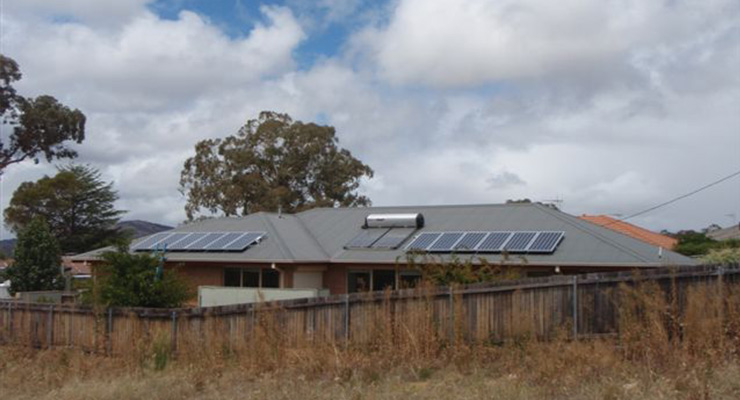Fast read
In today's age of abundant information, solar myths abound, influencing perceptions and decisions about renewable energy. Let's debunk some of the most common misconceptions surrounding solar power in Australia.
Myth #1: The Cons Outweigh the Pros Critics argue solar is too costly, ineffective on overcast days, and energy storage is prohibitively expensive. However, government incentives and advancements in technology have made solar increasingly affordable. Even on cloudy days, solar systems can harness indirect sunlight, and energy storage options like batteries have become more accessible.
Myth #2: Solar Causes Higher Bills Some attribute higher electricity bills to solar installations, overlooking factors like system sizing, changes in energy consumption, or tariff structures. Properly sized systems, coupled with efficient energy management, mitigate these concerns.
Myth #3: Solar's Carbon Footprint is Huge Opponents claim solar panels have a significant carbon footprint. However, life cycle analyses show panels quickly offset emissions through clean energy generation. Technological advancements and a shift towards renewable energy in manufacturing further reduce their environmental impact.
Dispelling these myths promotes informed decisions, encouraging the widespread adoption of solar energy for a cleaner, sustainable future.
What are some of the most common solar myths?
In today’s world, it’s easy to believe false information about renewable energy, such as solar power. Unfortunately, the solar industry is not immune to false beliefs propagated by sceptics and critics. These solar myths can mislead consumers and deter them from embracing solar energy solutions. Let’s debunk some of the most common solar myths circulating in Australia.
Myth #1 – The cons of solar outweigh the pros
This solar myth has many wrong ideas that stop people from thinking about using solar power for their homes or businesses. Let’s delve deeper into each aspect:
Expense:
Many people believe that installing a solar energy system is prohibitively expensive. Although there are initial costs for solar panels, the long-term financial gains are greater than the upfront investment.
In Australia, the average cost of a solar panel system is around $5000 per year. However, various government incentives and rebates, such as Small-scale Technology Certificates (STCs), can significantly reduce this cost.
Performance on overcast days:
Another common misconception is that solar panels are ineffective on cloudy or overcast days. While it’s true that solar panels produce less electricity in low-light conditions, they can still generate power from indirect sunlight. Also, rain helps clean the panels, improving their efficiency when the sun shines.
Solar technology has improved, making modern panels more efficient. They can now generate electricity from even small amounts of sunlight.

Affordability of energy storage:
The affordability of energy storage solutions, such as batteries, has been a concern for some consumers. Because of technology improvements and more competition, battery storage costs have decreased significantly in the past few years. For instance, the Tesla Powerwall, a common home battery storage option, can now be bought for just $800 per Kilowatt.
Additionally, government incentives and subsidies may be available to reduce energy storage system costs further. By investing in energy storage, homeowners can maximize their energy independence and resilience, further enhancing the benefits of solar energy.
Many people have worries and confusion about how much solar energy systems cost and how well they work.
Myth #2 – Solar causes higher electricity bills
This solar myth is a common misconception among individuals who have installed solar panels and subsequently experienced unexpected increases in their electricity bills. However, attributing higher electricity bills solely to solar energy is often misguided and overlooks several key factors:
Inadequate system sizing:
One of the primary reasons for higher electricity bills after installing solar panels is inadequate system sizing. If the solar power system is too small for the household’s energy needs, it may not produce enough electricity. This could result in not being able to cover all the electricity used. Homeowners may still need to use grid electricity for much of their energy needs, which can result in higher bills.
Changes in energy consumption:
Another factor to consider is changes in energy consumption patterns following the installation of solar panels. After installing solar panels, some homeowners may use more energy. They do this by adding energy-intensive appliances such as air conditioners, heaters, or swimming pools. These additional energy demands can offset the savings from solar energy generation, resulting in higher overall electricity bills.
Time-of-use tariffs:
In some cases, changes to electricity tariffs or pricing structures may contribute to higher electricity bills for solar users. If a homeowner is put on a time-of-use tariff, they will pay more for electricity during peak demand times.
This usually happens when solar power is not as strong. In that case, they may experience increased costs despite having solar panels. Understanding and managing electricity feed-in tariffs effectively is essential for maximising the financial benefits of solar energy.
Myth #3 – Creating solar panels generates a huge carbon footprint
Sceptics and critics of renewable energy often spread this solar myth, especially those who benefit from the fossil fuel industry. Some people believe that the process of making and using solar panels results in a large carbon footprint. This means that they may not be as environmentally friendly as traditional energy sources. However, this assertion fails to consider several important factors:

Technological advancements:
Improvements in solar panel technology, manufacturing, and materials have helped reduce the carbon footprint of solar panels. Innovations such as thin-film solar cells, perovskite solar cells, and bifacial panels have improved energy efficiency, reduced material consumption, and minimised manufacturing emissions. Additionally, increased use of renewable energy sources in manufacturing facilities and transportation further reduces the carbon footprint of solar panels.
Circular economy and recycling:
Manufacturers increasingly incorporate recycled materials into solar panel production and develop innovative recycling technologies to recover valuable materials from decommissioned panels.
In conclusion, debunking common solar myths is essential for promoting accurate information and encouraging widespread adoption of solar energy. Embracing solar power as a clean and renewable energy source is a step towards a sustainable future for all.
